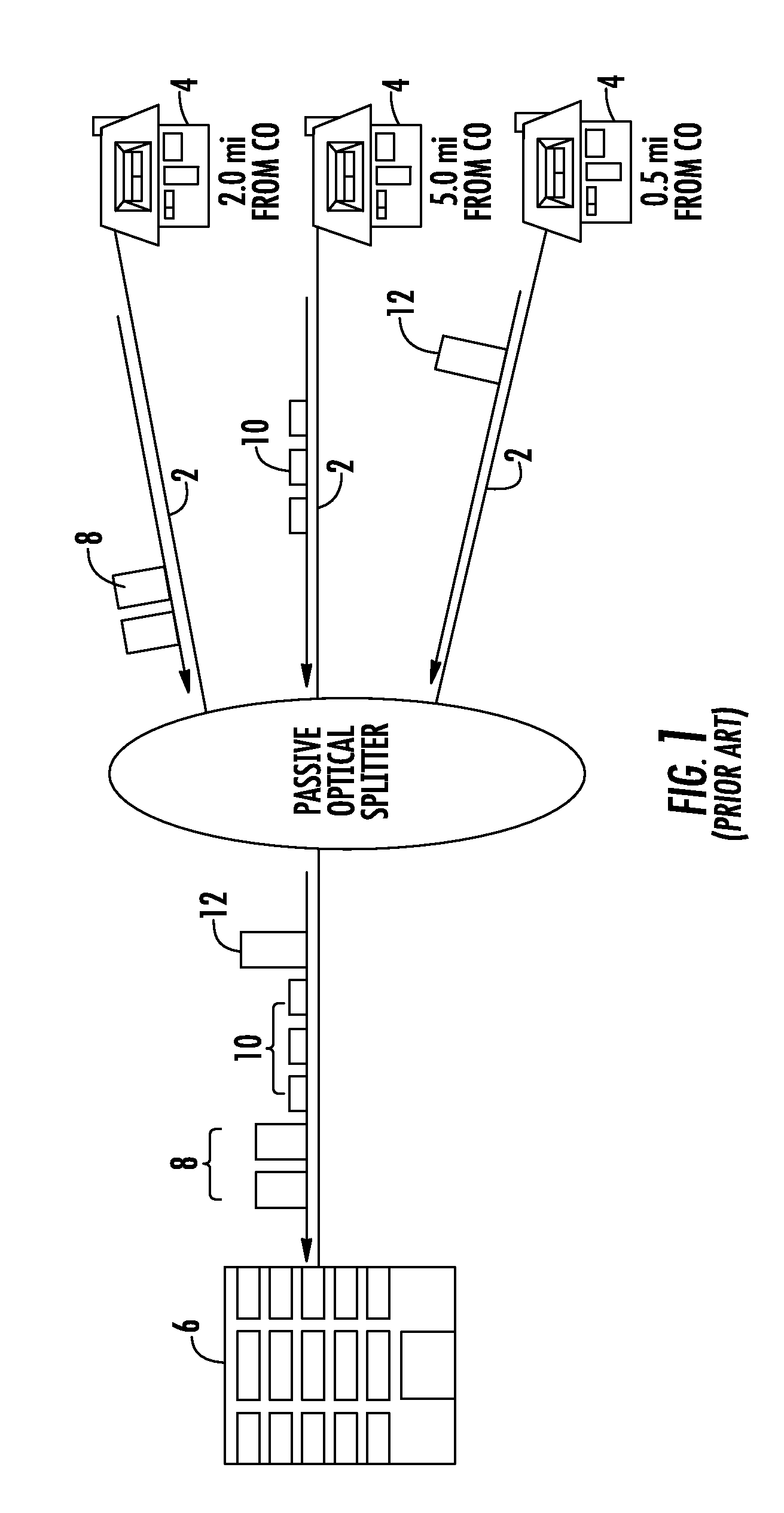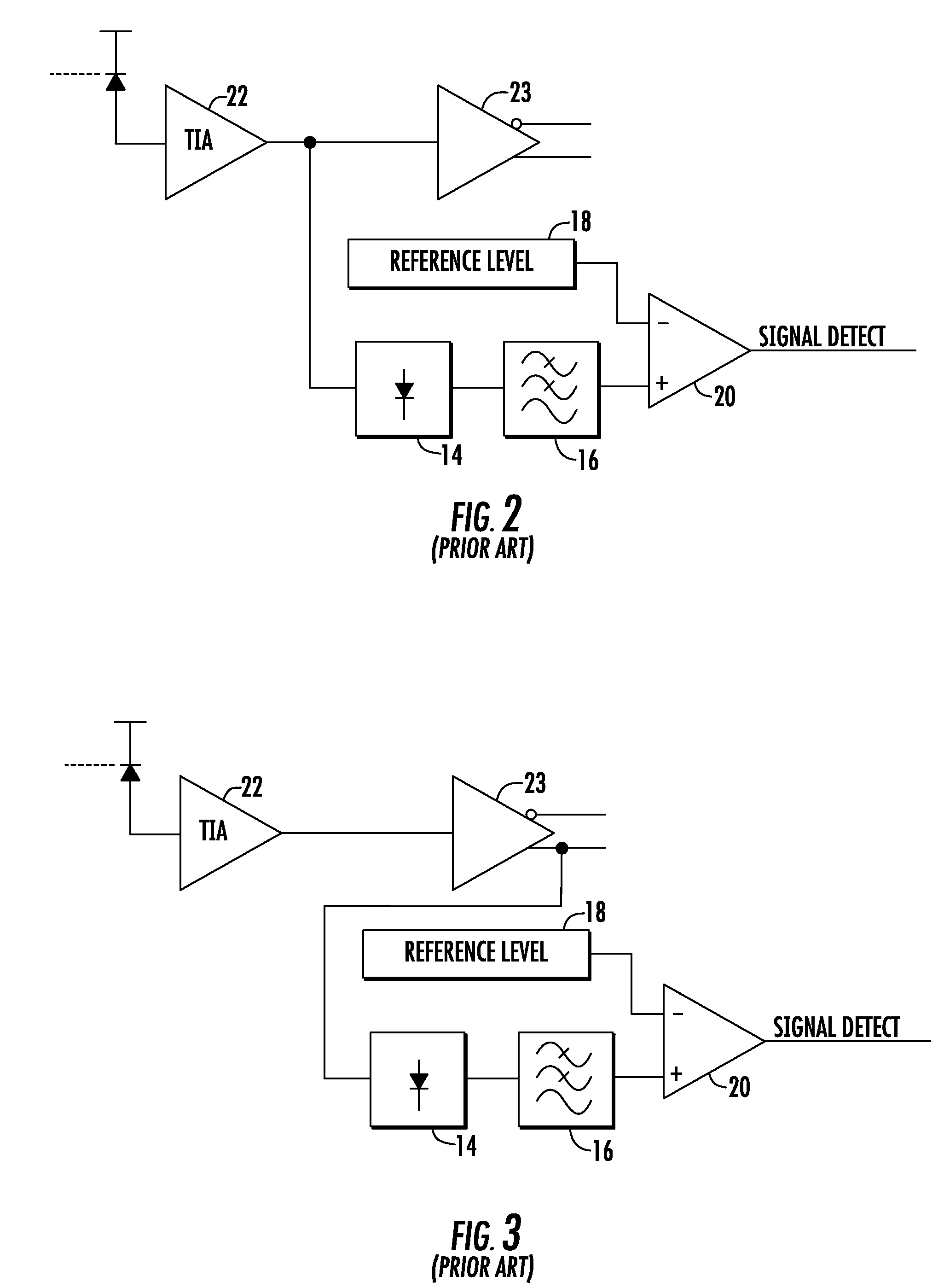Method for detecting a signal on a passive optical network
- Summary
- Abstract
- Description
- Claims
- Application Information
AI Technical Summary
Benefits of technology
Problems solved by technology
Method used
Image
Examples
Embodiment Construction
[0019]Now referring to the drawings, the arrangement for the transceiver assembly of the present invention is shown and generally illustrated in FIGS. 4 and 5. As was stated above the circuitry arrangement in the transceiver of the present invention generates a ranging signal that is transmitted along the fibers attached thereto and then filters the return signal in an manner that eliminates virtually all of the noise effects found on the fiber to provide a highly reliable timing signal for an accurate delay calculation. Further, the particular arrangement of the transceiver assembly of the present invention allows only a ranging signal that returns at the fundamental frequency to pass through the signal detect circuitry thereby insuring an accurate signal detect is being passed along for use in processing the delay signal for signal bursts transmitted along that fiber.
[0020]In the most general terms, the present invention as depicted in FIG. 4 is directed to a burst mode transceive...
PUM
 Login to View More
Login to View More Abstract
Description
Claims
Application Information
 Login to View More
Login to View More - Generate Ideas
- Intellectual Property
- Life Sciences
- Materials
- Tech Scout
- Unparalleled Data Quality
- Higher Quality Content
- 60% Fewer Hallucinations
Browse by: Latest US Patents, China's latest patents, Technical Efficacy Thesaurus, Application Domain, Technology Topic, Popular Technical Reports.
© 2025 PatSnap. All rights reserved.Legal|Privacy policy|Modern Slavery Act Transparency Statement|Sitemap|About US| Contact US: help@patsnap.com



